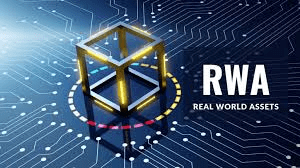
Currently, when discussing blockchain applications, everyone cannot avoid a concept, which is RWA—tokenization of real-world assets. In simple terms, it transforms various types of assets in reality, such as bonds, artworks, or real estate, into on-chain digital tokens through blockchain technology. This is not just a change in asset form; more importantly, it is reconstructing the way value flows.
Let’s look at a recent case: Hong Kong has launched the world’s first RWA registration platform. This means a new hub connecting Chinese assets and international capital is forming. Through such infrastructure, the thresholds and costs for cross-border capital flows are expected to be significantly reduced, and in the future, it may really be as convenient as sending an email.
Speaking of the practical applications of RWA, the first charging pile RWA financing project has already appeared domestically. Such heavy assets typically have poor liquidity, but through tokenization, existing assets have been activated, and new financing channels have been opened. This actually reflects a core value of RWA—it can inject a 'digital engine' into the real economy. For example, in the agricultural sector, RWA-izing assets in the supply chain not only helps farmers solve financing difficulties but also makes the flow of every fund clear and traceable, thereby optimizing the resource allocation of the entire industrial chain.
From the perspective of market structure, RWA also plays the role of a 'connector' between traditional finance and DeFi. On one side is the large-scale but inefficient traditional financial market, and on the other side is the innovative but sometimes unstable DeFi field due to a lack of solid underlying assets. The emergence of RWA precisely bridges this gap—bringing stable assets like government bonds and high-grade bonds into the DeFi system, providing value support for the latter, and opening new value-added pathways for traditional capital.
Additionally, it is worth mentioning the role of RWA in creating liquidity. Take real estate as an example: a residential property valued at tens of millions is difficult for ordinary investors to participate in. However, if it is split into one million shares through RWA, then for just a few dozen dollars, one can hold the corresponding share. This 'splitting' transforms assets that are originally not easily liquidated—whether factory equipment or accounts receivable—into digital assets that can be traded globally, greatly enhancing capital efficiency.
Overall, RWA is not just a conceptual exercise; it has gradually landed in multiple scenarios and has become a real force driving the digital transformation of industries. As technology, regulation, and the market mature further, the trillion-level asset values in the real world are expected to flow more smoothly into the ecosystem built by blockchain, which may be one of the important evolutionary directions for the digital economy in the future.
(The views are for reference only and do not represent any investment advice.)


